Monthly economic brief: February 2021
The monthly economic brief provides a summary of latest key economic statistics, forecasts and analysis on the Scottish economy.
Consumption
Consumer sentiment and consumption activity have been significantly impacted in 2020 by the coronavirus pandemic and restrictions on activity.
Consumer sentiment
- In Q4 2020, the Scottish Consumer Sentiment Indicator was -21.5 and decreased by 2.7 points compared to Q3 2020. This indicates that consumer sentiment weakened over the quarter, and is at its lowest point in the time series.
- Underlying the composite indicator, all current and expectation indicators decreased over the quarter, with the current indicators for the economy, household financial security and attitude to spending all falling to their lowest levels in the times series, reflecting the ongoing impacts of the pandemic on households current circumstances.
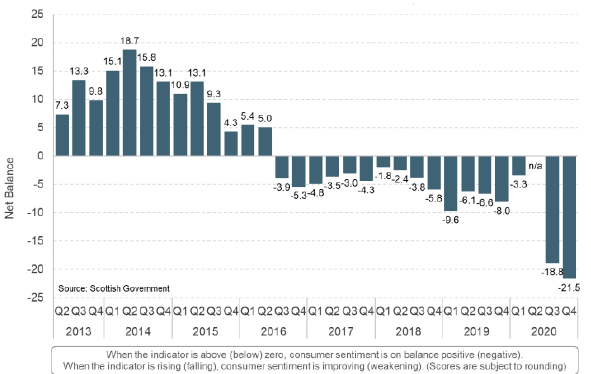
- Looking ahead, households continue to expect the economy and their household financial security to improve over the year (relative to the current situation). However, the largest falls over the quarter were in the expectations indicators for the next 12 months, signalling that the level of optimisim has weakened over the quarter.[17]
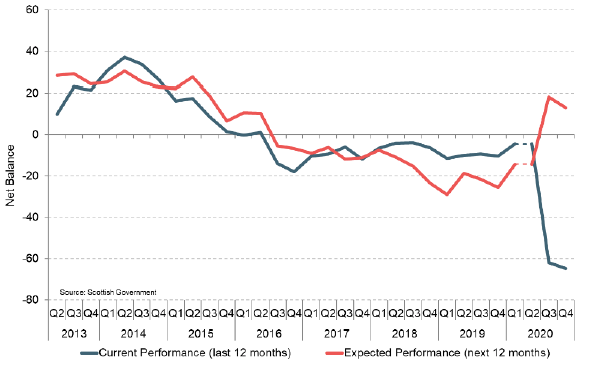
- More recent GfK UK consumer sentiment data[18] for January also showed that UK sentiment decreased slightly at the start of the year, mainly driven by a notable weakening in household expectations for the economy over the coming year. Sentiment indicators have been highly sensitive to the rapidly moving developments on the pandemic over the past year and most recently have likely reflected a combination of optimism regarding the vaccine alongside renewed uncertainty from the introduction of tighter restrictions at the start of the year. This will be a key factor influencing the pace at which consumption recovers when restrictions are lifted.
Retail sales
- The Scottish Retail Sales Monitor for December[19] showed the recovery in retail sales growth weakened further in December, having already weakened in November as non-essential retail closed across areas in level 4 restrictions.
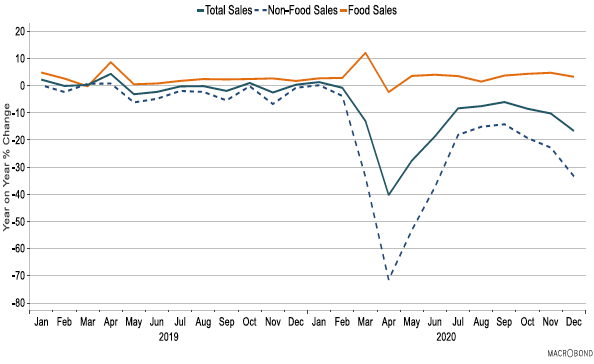
- Total sales in December fell 16.6% year on year in Scotland (its sharpest fall since June), weakening from the 10.2% annual fall in November and 8.5% fall in October.
- Food sales increased by 3.3% (its slowest pace since August) while non-food sales fell 33.4% (its sharpest annual fall since June). The combination of the closure of non-essential retail across 11 Local Authorities into the start of December, alongside pressure on incomes, subdued sentiment and heightened uncertainty are factors that continued to impact on consumer activity.
Interest rate and inflation
- The fall in demand during national lockdown, alongside the fall in oil price to record lows placed downward pressure on inflation in the first half of 2020 and which has continued into the third and fourth quarters of the year.
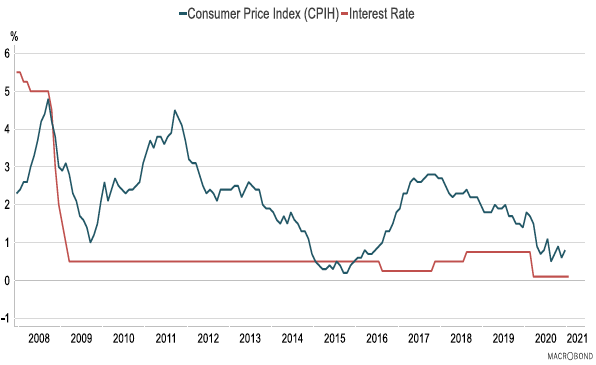
- The Consumer Prices Index including owner occupiers’ housing costs (CPIH) 12-month inflation rate increased to 0.8% in December, up from 0.6% in November.[20]
- There were key upward contributions to the inflation rate from recreation and culture, transport and clothing, which offset falling contributions from food and non-alcoholic beverages and furniture and household goods.
- The Bank of England maintained the Bank Rate at 0.1% in February 2021[21] and in their current central scenario analysis project inflation to rise from 0.5% in 2020 to around 2% in 2021.
Latest Scottish economy forecasts
The Scottish Fiscal Commission (SFC) published their latest forecasts for the Scottish economy alongside the Scottish Government budget on 28 January. Given the current national lockdown, the forecasts present a difficult economic outlook.
GDP is forecast to fall by 5.2% in Q1 2021, leaving GDP around 13% below its pre-pandemic level, reflecting the impact of restrictions that have been introduced over the past 10 months to supress the spread of the virus.
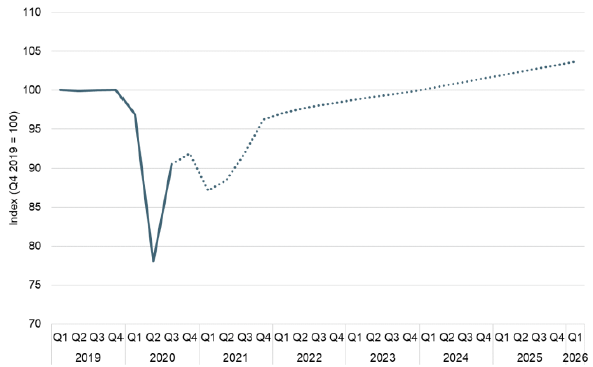
The SFC expect that varying levels of national and regional restrictions will continue to be in place throughout 2021 even as the vaccine programme is rolled out. This results in economic activity remaining subdued during 2021, with growth of 1.8%. It is not until the end of the year, when significant restrictions on economic activity are assumed to no longer be required, that the economy begins to significantly rebound growing by 7.5% in 2022. Despite this the SFC assumes that a degree of “scarring” occurs to the productive capacity of the economy and consequently forecast that economic activity may not return to pre-pandemic levels until early 2024.
Although GDP is expected to fall at the beginning of the year, this does not feed through into the labour market immediately. The SFC assume that, in the short term, the furlough scheme continues to limit the impact of the pandemic on the level of unemployment. However, in line with a number of other commentators, and as discussed in this report, the SFC assume that unemployment is currently higher than suggested by the headline LFS. Their forecast reflects that unemployment is judged to have reached around 6.8% in Q3 2020 and remains there whilst the furlough scheme is in place.
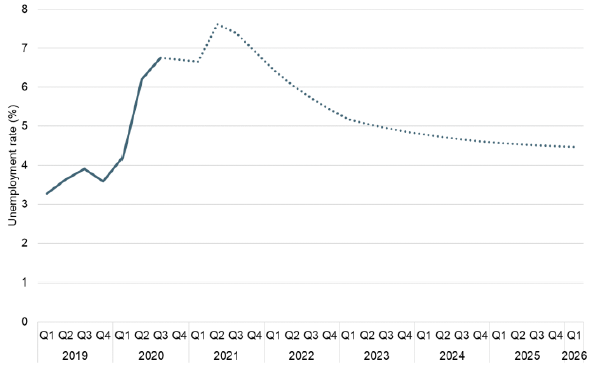
Following the withdrawal of the furlough scheme, unemployment peaks at 7.6% in Q2 2021. It then remains elevated compared to pre-pandemic levels through the forecast, with the scarring effects of the pandemic meaning that the trend unemployment rate is 0.4 percentage points higher in the long run.
The projected increase in unemployment at the end of the furlough scheme highlights the critical role that the scheme has played in supporting both employment and earnings at a time when GDP has fallen sharply. This disconnect between trends in output and labour market indicators such as employment and earnings has also meant that the SFC’s fiscal forecasts do not track the economic forecasts as closely as in previous years.
Contact
Email: OCEABusiness@gov.scot
There is a problem
Thanks for your feedback